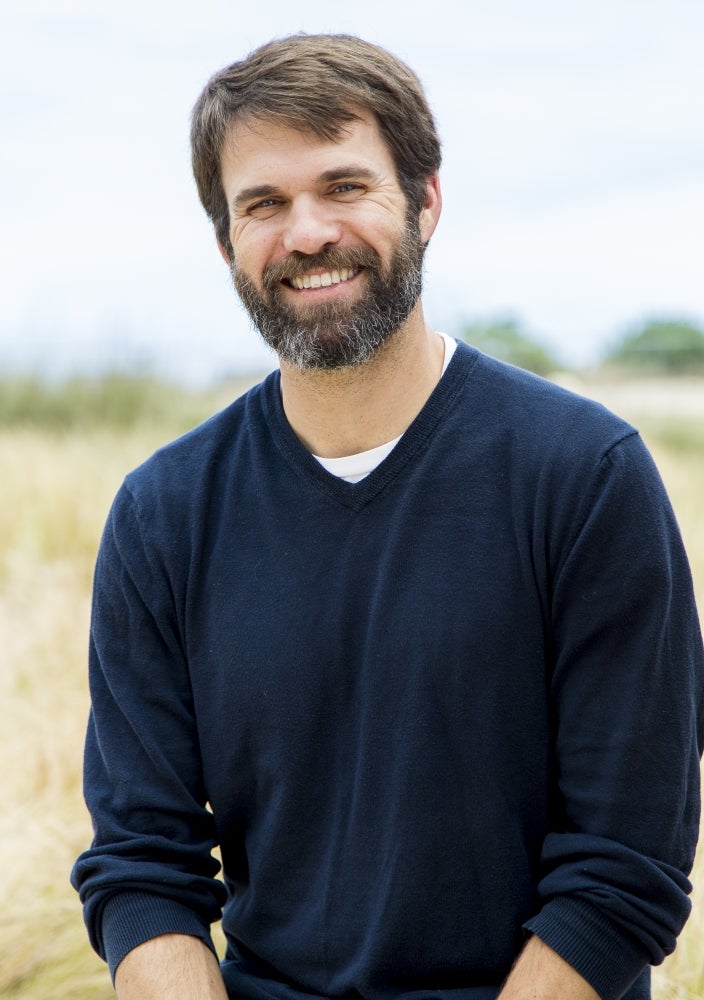
The Long Arm of Species Loss

Tigers or termites? Blue whales or bacteria? Fishes or fungi? Large and rare or small and abundant? Which kind of organisms matter most to ecosystems?
Three decades ago, two pillars of ecology, Edward O. Wilson and John Terborgh, argued this very question. Wilson, famous for his pioneering work on ants, took up the case of the small multitudes, while Terborgh highlighted the outsized effects megafauna have on their ecosystems.
To an extent, each was correct: Both large and small organisms drive various aspects of ecosystem dynamics. “But one major group of organisms, the microscopic members of the communities, were all but ignored at the time Wilson and Terborgh’s debate played out,” writes ecologist and UC Santa Barbara Professor Deron Burkepile in the journal BioScience.
With his longtime collaborator, Rebecca Vega Thurber at Oregon State University, Burkepile published an article discussing how microbes fit into ecosystems and what effect species loss at the top will have on these microscopic communities that often serve as an ecosystem’s foundation.
“We mostly think about microbes from the bottom up,” Burkepile said. “For instance, how they control nutrient cycling or, more obviously, from the disease perspective. But we often think of these microbes as black boxes: Nutrients go in one side and they come out the other.”
But as animals continue to disappear, the effects reverberate throughout ecosystems around the world. These changes disrupt food webs in what ecologists call trophic cascades. “People have thought about trophic cascades for a long time,” Burkepile said. “If you remove wolves from an ecosystem how does that effect elk, and then how does that effect the trees that elk eat?” But trophic cascades don’t just stop with the stuff we can see; they go all the way down to the microbe community.
“There are not a lot of studies that make these links explicit, but it’s important to understand that these links between big animals and microbes are probably really common across all ecosystems,” Burkepile said. “We just aren’t often looking for them.”
The marsh snail is a good example. These mollusks pose a threat to the grasses in coastal wetlands throughout the southeastern United States. But the snails aren’t eating the plants; rather, they scrape small wounds on the surface of the marsh grass to cultivate fungi. The snails’ effect on the plants is mediated by the microbes, explained Burkepile. When things get out of hand it’s a result of the microbes, not the snails themselves. And the trigger is the removal of the snails’ predators — like blue crabs, terrapins and fish — without which the snails can, in effect, clear-cut a marsh while hardly eating any of the plants. This, combined with climate change-induced droughts, has driven the decline of salt marshes across the southeastern U.S.

The decline of the marsh snails’ predators, like the blue crab, leads to an increase in the snails’ cultivation of fungus on mash grasses. The results can devastate the wetland ecosystems.
Photo Credit: BRIANNA E. LEAHY
Microbes also play a large role in carbon sequestration, especially algae, and their place in an ecosystem has consequences for climate change. For instance, Burkepile is curious how bass, the top predator in many lakes, might influence how much carbon lake microbes sequester in the sediments. “Understanding how top predators affect the microbes, and how they chew through carbon in soil or lake sediments, is really important for thinking about, say, the carbon budget of our planet,” he said.
Burkepile and Vega Thurber are intimately familiar with how these dynamics play out on reef systems, which they’ve studied from two different perspectives. “One of us has spent our career chasing fishes around a reef with a net, and the other has spent their career sampling pieces of coral, extracting their DNA and trying to understand the whole community that lives on this foundation species,” said Burkepile, the fish-chasing researcher. Over the years it has become clear that fish affect the health of the coral, which is mediated by the microbial community. This then affects the fish by facilitating more coral. It’s all connected.
Currently, Burkepile and his colleagues are seeking funding for a whole-island ecological experiment. They intend to help seabird populations recover on a number of atolls in French Polynesia. Seabirds are a huge source of nutrients on these islands because they hunt in the oceans but return to land to roost. These nutrients trickle out into the ecosystem, including the microbes in the surrounding reefs.
However, invasive rats eat the birds’ eggs. Burkepile and his colleagues want to exterminate the rats on a number of the atolls and follow up with long-term monitoring of the surrounding ecosystems.
As for his most recent publication: “The paper is mostly about trying to stimulate people to start really digging into the links between the things that we can see and the things that we can’t see,” said Burkepile. “We’re trying to foster an idea, that these connections between the macrobes and the microbes are much more important than people realize.”



